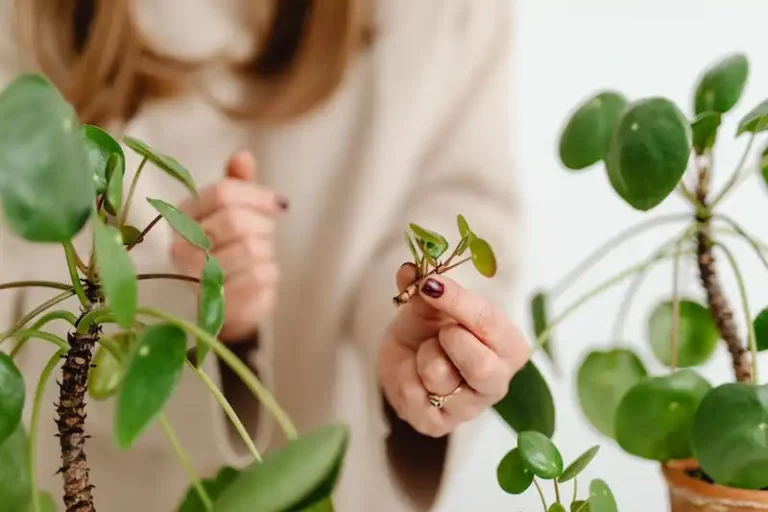Rudbeckia, also known as Black-Eyed Susan, is a common flower that blooms from July to the first frost. These plants are easy to grow and enjoy in the garden or pots. They have long stems and vibrant bronze petals with a dark center, resembling an eye. They can tolerate cold temperatures and are hardy in zones 3-9.
The first step to growing Rudbeckia is to separate the seeds from the spent blooms in the fall. They are small and light brown in color. You can also purchase Rudbeckia seeds if you don’t have the plants in your garden. Plastic containers or pots should be used for planting. The soil must be well-drained and moist. The seeds can be planted on the soil surface and lightly covered with a thin layer of soil.
Rudbeckia is prone to diseases like mildew, so it is important to take notes on the plants throughout the growing months. Aftercare is key for their success. The temperature should be kept around 70 degrees Fahrenheit during the day and slightly cooler at night. They may need fertilizer, especially if the soil is poor in nutrients.
The second step in growing Rudbeckia is stratification. This process helps to break the dormancy of the seeds. It can be done by placing the seeds in a plastic bag with damp paper towels and storing them in the refrigerator for 4-6 weeks. After stratification, the seeds can be planted in pots and placed in a sunny location.
Black-Eyed Susan plants grow to a height of 2-3 feet and spread out about the same space. The flowers are double-layered and have a bright yellow or orange color. They can be combined with other flowers to create stunning floral arrangements. Throughout the growing season, make sure to deadhead the spent blooms to encourage more flowering.
With proper care and attention, Rudbeckia Black-Eyed Susan plants can become a beautiful addition to your garden. Whether you are a beginner or experienced gardener, these flowers will surely bring color and joy to your outdoor space.
How to Grow and Care for Black-Eyed Susan
Black-Eyed Susan, also known as Rudbeckia hirta, is a common flower that is easy to grow and care for. It can be planted in both indoor and outdoor gardens and is known for its bright yellow blooms with a black center. If you follow the right steps and provide the necessary care, your Black-Eyed Susan plants will thrive for many years to come.
| Step | Information |
| 1 | Choose the right location: Black-Eyed Susan plants prefer full sun, so make sure to select a spot in your garden that receives at least 6 hours of direct sunlight per day. |
| 2 | Prepare the soil: These flowers can grow in a wide range of soil types, but they prefer well-draining soil. Before planting, amend the soil with organic matter to improve drainage and fertility. |
| 3 | Sow the seeds: Black-Eyed Susan seeds can be directly sown into the garden in early spring or started indoors 6-8 weeks before the last frost. Sow the seeds at a depth of 1/4 inch and keep the soil moist until germination occurs. |
| 4 | Aftercare: Once the seedlings have sprouted, thin them out so that there is 12-18 inches of space between each plant. Water the young plants regularly, but be careful not to overwater. Black-Eyed Susan plants are drought-tolerant and can survive with minimal watering. |
| 5 | Fertilizer: Black-Eyed Susan plants do not require much fertilizer. You can apply a balanced fertilizer, such as a 10-10-10, once or twice during the growing season to promote healthy growth and blooming. |
| 6 | Pests and diseases: Black-Eyed Susan plants are generally resistant to pests and diseases. However, they can sometimes be affected by powdery mildew. To prevent this, make sure the plants have enough airflow and avoid overhead watering. If necessary, treat the mildew with a fungicide spray. |
| 7 | Harvesting and arrangements: Black-Eyed Susan flowers will bloom within 60 to 90 days after germination. Once the flowers have fully opened, you can cut off the spent blooms to encourage continuous blooming. These flowers make great additions to floral arrangements and can be enjoyed both indoors and outside. |
By following these steps and providing the necessary care, you can successfully grow and care for Black-Eyed Susan plants. They are low-maintenance perennials that can add a splash of color to any garden.
Black-Eyed Susan Care
Black-Eyed Susans, also known as Rudbeckias, are a common type of flowering plant that can add a pop of color to your garden. If you want to grow these beautiful blooms, here is some information on how to care for them.
First, you need to decide where to plant your Black-Eyed Susans. They prefer full sun but can tolerate some shade. Make sure to space them about 18 to 24 inches apart to give them enough room to grow. They can be grown indoors as well, but they will thrive better outdoors.
When it comes to watering, Black-Eyed Susans need to be watered lightly. They don’t like to be too wet, so make sure the soil is well-drained. Water them deeply once a week, especially during hot and dry periods. You can also use a misting bottle to spray water over the foliage to increase humidity.
Black-Eyed Susans are not too picky when it comes to soil. They can grow in various soil types as long as it is well-drained. You can combine soil with compost or peat moss to improve drainage and provide nutrients.
Temperature is key when it comes to growing Black-Eyed Susans. They prefer temperatures between 65 and 75 degrees Fahrenheit during the day and slightly cooler at night. They can tolerate colder temperatures, down to about 45 degrees Fahrenheit, but if it drops below freezing, they will need protection.
Black-Eyed Susans can be prone to some problems, including powdery mildew and rust. To prevent these issues, make sure to space your plants apart to allow for air circulation. If you do notice any signs of disease, you can treat them with an appropriate fungicide.
Black-Eyed Susans can be grown from seeds or purchased as seedlings. If you are starting from seeds, sow them directly into the garden in the spring, as they need a period of cold treatment to germinate. You can also start them indoors 6 to 8 weeks before the last frost date and transplant them outside when the danger of frost has passed.
Black-Eyed Susans come in various types, including dwarf varieties and double-flowered types. The most common type is Rudbeckia hirta, which has yellow petals with a black center. There are also other colors available, such as orange and brown.
Black-Eyed Susans are known for their long blooming period, which can last throughout the summer and into the fall. Deadheading the flowers, which means removing the spent blooms, can encourage more blooms to come. You can also cut them for bouquets, as they make a fine addition to floral arrangements.
In colder regions, Black-Eyed Susans will die back in the winter, but don’t worry, they will grow back the next spring. It’s a good idea to add a layer of mulch over the plants in the winter to protect them from frost.
So if you want to add a touch of cheerful color to your garden, consider planting Black-Eyed Susans. With the right care, they will reward you with beautiful blooms year after year.
Light
Light plays a crucial role in the growth and development of Rudbeckia plants. Black-eyed Susan plants require full sun to thrive, meaning they need at least six hours of direct sunlight each day. When selecting a location for planting, it is important to choose a spot within your garden that receives ample sunlight throughout the day.
It is important to note that the temperature within the growing space can also affect the growth of Rudbeckia plants. These plants are typically grown as perennials in USDA hardiness zones 3 to 9. They can tolerate a wide range of temperatures, but they thrive in slightly cooler temperatures, between 65 and 75 degrees Fahrenheit (18 to 24 degrees Celsius), during the day and slightly cooler temperatures at night.
Gardeners can start Rudbeckia seeds indoors or directly sow them into the ground after the risk of frost has passed. When starting seeds indoors, it is recommended to use plastic pots or trays with good drainage to prevent damp-off diseases. The seeds should be sown on the surface of the potting soil and lightly covered with soil or vermiculite.
Aftercare is essential for the successful growth of Rudbeckia plants. Once the seeds have germinated and the seedlings have grown to a size where they can be moved, the young plants can be transplanted into individual pots or spaced out in the garden. Dig a hole in the ground that is large enough to accommodate the roots of the plant and gently place the seedling in the hole. Space the plants about 12 to 18 inches apart to give them room to grow.
Rudbeckia plants are known for their stunning flowerheads that resemble velvet. These flowerheads can range in color from yellow to orange to red, and they can grow up to 4 inches (10 cm) in diameter. To ensure a healthy root system, it is important to water the plants regularly, especially during dry periods. However, overwatering can cause root rot, so it is important to find a balance.
Propagating Rudbeckia plants can be done by either dividing the plants or by growing them from seed. Dividing the plants involves carefully digging up the mature plants and separating them into smaller sections, each with its own roots. These divisions can then be planted in a new location or shared with other gardeners. Growing Rudbeckia plants from seed is a more time-consuming process but allows for a larger number of plants.
If you wish to sow Rudbeckia seeds, you can either purchase them from a garden center or collect the seeds from the flowers yourself. To collect the seeds, wait until the flowerheads have completely dried on the plant. Remove the dried flowerheads and rub them between your fingers to release the seeds.
When sowing Rudbeckia seeds, it is recommended to start them indoors about 6 to 8 weeks before the last expected frost date. Fill a pot or tray with potting soil, moisten the soil, and then scatter the seeds on the surface. Lightly press the seeds down into the soil to ensure good contact, but do not cover them with additional soil. Place the pot or tray in a warm location that receives indirect light.
Throughout the growing season, it is important to keep the Rudbeckia plants well watered and to feed them with a balanced fertilizer. This will help them to grow strong and produce healthy blooms. As the flowers begin to fade, it is recommended to deadhead them to encourage continued blooming. Be sure to stay updated on the specific care requirements of the Rudbeckia variety you are growing, as some types may have additional needs or preferences.




